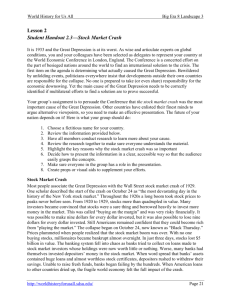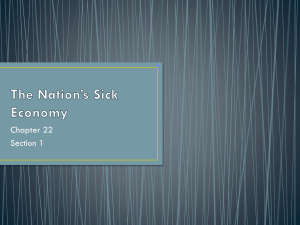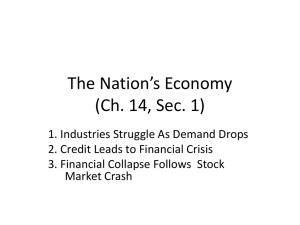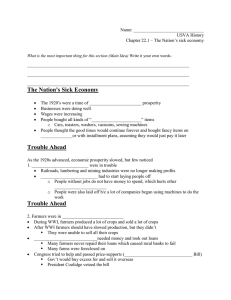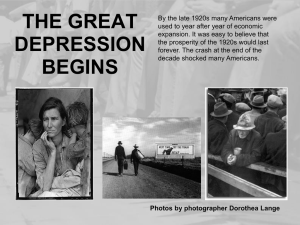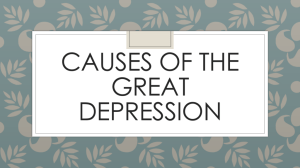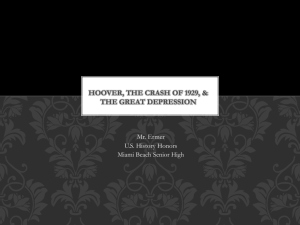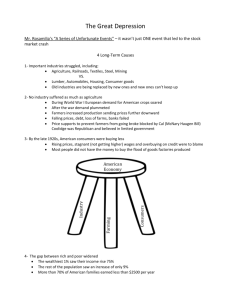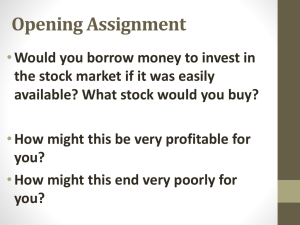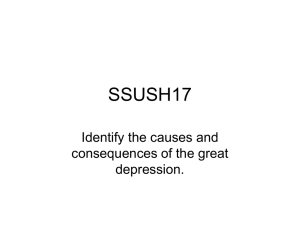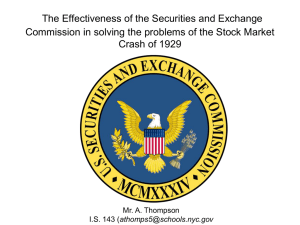Stock Market Crash
advertisement
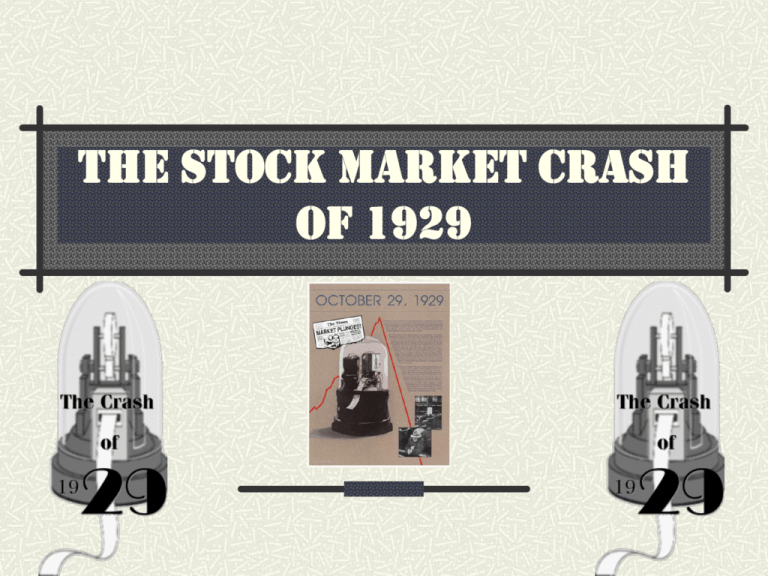
The stock Market Crash of 1929 1920s Booming Economy Wages up 40% after WWI Stock Market was soaring Many people investing – get rich quick schemes 1920s fad – get into the market America has emerged as a world economic, industrial, and military power Economic Danger Signs 200 businesses control 50% of the economy? Why is this dangerous? Too much industry overproduction - surplus goods not being purchased Too many products not, enough consumers buying 80% of population has no savings More Economic Danger Signs Banks are uninsured No gov. agencies monitor banks or the Stock Market – Laissez Faire/Republican Presidents Market value based on borrowed $ and over speculation instead of real value Increase in personal debt – (Credit debt and installment plan debt) Buying Stocks on Margin – borrowed money from Stock Broker to purchase Stocks The Warning Sign Farm prices drastically fall after WWI Farmers paid by gov. to make food for allies, creates a huge surplus Farmers unable to repay loans after gov. pulls WWI agricultural contracts 6,000 banks close out West What are the consequences? Pres. Hoover vetoes all bills to help farmers Laissez-Faire STOCK MARKET CRASH OF 1929 Black Thursday Black Thursday Oct. 24th, 1929 - Stocks fall drastically - Brokers panic - GE falls from $400 a share to $283 a share - Brokers make margin calls – no one can pay Black Tuesday October 29th, 1929 Stocks plunge again Value of market falls People sell what’s left to get some $ By the end of Oct. – over $30 billion has been lost Thousands lose everything Immediate Effects of the Crash Many lost life savings in the market crash Banks and Brokers call in loans – American people have no $ Hundreds of banks close No $ to pay back loans = empty savings accounts Banks not prepared for people to withdrawal $ at the same time No bank insurance 9 million savings accounts vanish
